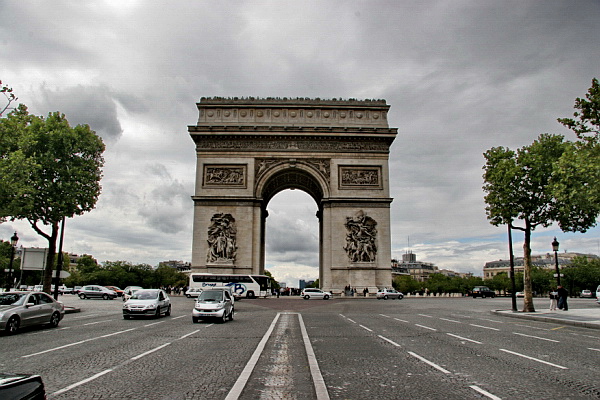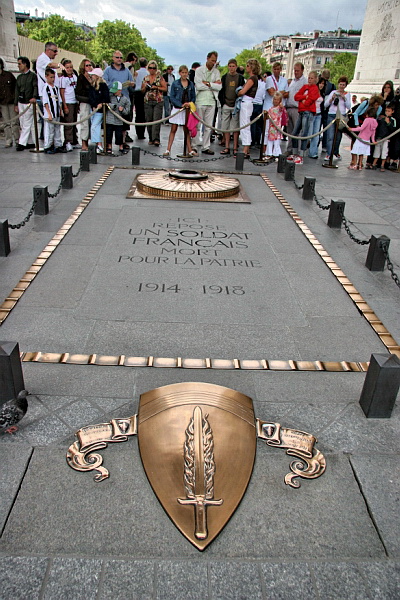Champs Elysees - Arc de Triomphe
A simple corner of the countryside
In 1667, vast country-style gardens were added to the Tuileries Palace, reaching the Chaillot hill. The foreman in charge of the work, Le Notre, created a huge arrangement of avenues that were bordered with plants along which Parisians could stroll.
In 1694 the newly created grand avenue took the name of the Champs Elysees, in reference to Greek mythology. The supervision of the work, begun by Colbert, was taken over by the Marquis of Marigny, who entirely replanted the existing promenades.
From the end of 18th to the mid 19th Centuries, the Champs Elysees looked much the same and the Place de l’Etoile was still nothing more than a mound of earth.
The creation of a witness to History
In the mid 18th Century, the authorities wished to improve the vast area at the top of the Champs Elysees, where five roads met. A series of far-fetched plans were suggested, including the construction of a giant elephant housing a ballroom and a theatre!
Napoleon Bonaparte finally decided on the future of the Place de l’Etoile. In 1806, bathed in glory following the battle of Austerlitz, he decided to build a monument dedicated to the Imperial Army. The building would take the form of a triumphal arch, to allude to his military genius and to Antiquity.
The dimensions of the building were imposing: it was to be 50 metres high and 45 metres wide. Construction was entrusted to Jean Francois Chalgrin. He was succeeded by the architects Goust and Huyot, under the supervision of the Viscount Hericart de Thury.

The building becomes part of the city and of History
Following the fall of the Empire and the Restoration of the Monarchy, work was suspended. It restarted in 1825 and was finished in 1836. The Arc de Triomphe was inaugurated by Louis-Philippe, the King who was never crowned.
The brand new building quickly became part of public life.
During the transfer ceremony on 15 December 1840, the cortege carrying Napoleon’s ashes passed under the Arc de Triomphe. Also the body of Victor Hugo was guarded all night under the Arc on 22 May 1885 before being buried in the Pantheon.
Urban development soon incorporated the Arc de Triomphe. The Place de l’Etoile was completed in 1854. A few years later, Baron Haussmann made plans for seven other avenues to be linked to the Place.
A symbol of national pride
Over the years, the Arc de Triomphe reassumed its initial purpose, that of a symbol of patriotic pride.

On 14 July 1919, the victorious troops marched under the arch. Then, on the same spot, the body of an unidentified soldier, a victim of the Great War, was buried on 11 November 1920. The flame of remembrance, dedicated to the memory of the soldiers who fell during the Great War, has burned here since 1923.
When Paris was liberated in August 1944, General de Gaulle paraded down the Champs Elysees before jubilant crowds, stopping to pay his respects at the tomb of the Unknown Soldier. Since this day, the Arc de Triomphe has been an essential feature of all major republican occasions, including the annual 14th July parade.
The Arc de Triomphe was used as a reference point, together with the Chateau des Tuileries, for determining the alignment of the great Arche de la Defense before its construction.